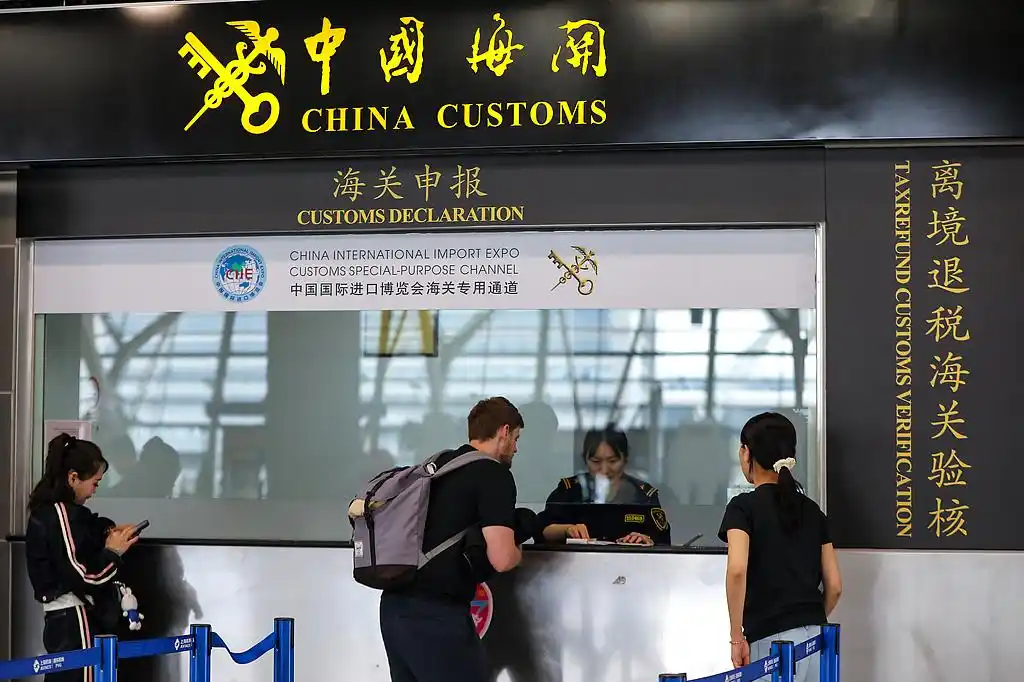Exporters pivot to home market amid headwinds


Chinese exporters to the United States are increasingly pivoting to the domestic market as overseas demand softens, with official tax data showing a steady uptick in local sales in April.
Industry experts said that the shift reflects how Chinese manufacturers are reducing their reliance on the US market amid trade tensions triggered by the US' tariff moves, and it also aligns with China's broader push to boost domestic consumption for long-term economic growth.
According to the State Taxation Administration, Chinese companies that export their products to the US reported a 4.7 percent year-on-year increase in domestic sales last month. The share of domestic sales in their total revenue also rose by 2 percentage points compared with the first quarter.
Out of 31 major manufacturing sectors, 21 saw domestic sales take up a larger share of revenue. Leather and footwear producers saw the sharpest shift in April, with the domestic share of sales up 10 percentage points from a year earlier.
Other industries with notable increases included computer and telecommunications equipment, ferrous metals, furniture and food processing, all of which recorded gains of more than 5 percentage points in the domestic share of their total sales in April.
Zhang Juan, deputy director of the Shanghai WTO Affairs Consultation Center, said that in today's climate of growing uncertainty, including trade tensions between China and the US, shifting from exports to domestic sales is "no longer a short-term work-around".
"It has become a long-term strategy jointly driven by businesses and the government. Relying on both domestic and international markets is clearly the more stable path forward," she said.
Nearly 85 percent of Chinese exporters are already engaged in domestic sales, which account for around 75 percent of their total revenue, according to Zhang.
Among these companies is Olod, a kitchenware manufacturer based in Yiwu, Zhejiang province. The company once relied on shipping 500,000 cookware units annually to North America, Europe and the Middle East. But trade tensions and rising costs prompted it to shift 70 percent of its export-oriented goods to the domestic market.
Li Xiongfei, head of Olod, said, "Even though trade tensions are easing, the challenges we faced until now, including a slump in orders and rising costs, showed how vulnerable we are without a strong foothold at home. It made us realize that export alone is not sustainable."
The company now conducts livestreaming e-commerce on WeChat, China's largest social media platform, and its daily sales revenue has exceeded 1 million yuan ($138,800).
"If global trade is open, we're in. If not, we've got 1.4 billion people right here to do business with," said Li. "You've got to walk on two legs — balancing both domestic and overseas markets — if you want to go far and stay steady."
Since April, major Chinese e-commerce and retail companies have fleshed out plans to assist foreign trade companies in broadening domestic sales avenues, such as opening green channels, joining hands to develop new products, and pooling marketing resources.
These trends also align with China's broader push to boost domestic consumption to stabilize the economy. This year's Government Work Report made strengthening consumer spending the nation's top priority, emphasizing the need to boost the supply of quality products.
Peng Jianzhen, president of the China Chain Store & Franchise Association, said: "Many export-oriented products introduced to the Chinese domestic market have already proved successful in developed countries. With the right adjustments to fit local tastes, there's a huge potential for these products at home."




































